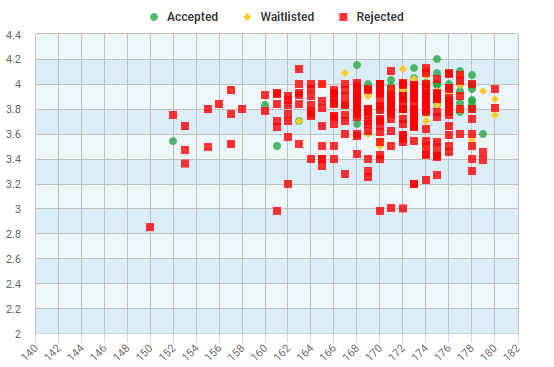SUNY Buffalo Law School
General Info

Since its founding in 1887, the University at Buffalo Law School (also known as UB Law, State University of New York at Buffalo School of Law, SUNY at Buffalo School of Law or University of Buffalo Law School) is the State University of New York system's only law school. It has established an excellent reputation and is widely regarded as a leader in legal education. Its cutting-edge curriculum provides both a strong theoretical foundation and the practical tools graduates need to succeed in a competitive marketplace, wherever they choose to practice. A special emphasis on interdisciplinary studies, public service, and opportunities for hands-on clinical education makes UB Law unique among the nation's premier public law schools.
Contact information
- (Website) https://www.law.buffalo.edu/
- (Admissions Dean) law-admissions@buffalo.edu
- (Location) Buffalo, NY
SUNY Buffalo Law School Admissions
SUNY Buffalo Law School is considered a Somewhat Competitive law school, which accepts only 52% of its applicants. Comparatively, Buffalo is Lower than the average cost for law school.
| Applications | Offers | Matriculated | |
|---|---|---|---|
| Class of 2029 | 995 | 514 (51.66%) | 141 (14.2%) |
| 25% | Median | 75% | |
| GPA | 3.21 | 3.44 | 3.66 |
| LSAT | 151 | 154 | 157 |
Tuition And Financial Aid
| In-State Resident | Non-Resident | |
|---|---|---|
| Full Time | $26,997 | $45,007 |
| Part Time | N/A | N/A |
Living Expenses
- Living on-campus: $22,732
- Living off-campus: $22,732
- Living at home: $11,731
Important Dates
- Early Decision 1: 11/15
- Early Decision 2: N/A
- Regular Decision: 03/01
- Application Fee: $85
SUNY Buffalo Law School Admissions Predictor Tool
SUNY Buffalo Law School COMPARISON TOOL
SUNY Buffalo Law School


SUNY Buffalo Law School Community
SUNY Buffalo Law School is considered to have a Somewhat Favorable student to faculty ratio. The average class size for 1L sections is approximately Above Average compared to other law schools. Student diversity at Buffalo is Below Average.
Student body
Faculty Statistics
- Full Time: 33
- Part Time: 58
Faculty
- # Female Faculty: 44
- # Minority Faculty: 9
Ratio
15.1 Students
1 Faculty
Housing Options
- On Campus Housing: Yes
- Graduate Housing: Yes
- Law Specific Housing: Yes
SUNY Buffalo Law School Curriculum
The size of 1L sections affects the quality and consistency of teaching in law schools. Generally with smaller 1L section sizes, students receive more individualized attention. SUNY Buffalo Law School 1L section size is 2% larger than law schools in New York and 29% larger than all PUBLIC law schools.
1L Section Size Comparison
Positions Available in Advanced Courses
- Simulation Courses: 1035
- Faculty Supervised Clinics: 79
Students Involved in Advanced Activities
- Field Placements: 147
- Law Journals: 182
- Moot Court/Mock Trials: 0
Attrition Rates
- First Year: 4.9%
- Second Year: 3.0%
- Third Year: 2.4%
- Fourth Year: 0.0%
SUNY Buffalo Law School Employment
Deciding to attend law school requires a large financial investment with the goal of securing employment upon graduation. The SUNY Buffalo Law School class of 2024 had an employment rate of 89% with 1% pursuing an additional degree.
Employment Comparison
In 2024, 97.3%% of students reported their employment status 9-months after graduation.
Type of Employment
- Law Firms: 46.0%
- Business: 20.0%
- Government: 14.0%
- Public Interest: 5.0%
- Academia: 3.0%
- New York: 95%
- District of Columbia: 1%
- Maryland: 1%
Bar Passage Rates
- Reporting: 97.3%
- First Time Takers: 187
- Average School: 76.4%
- Average State: 78.6%
- Pass Difference: -2.2%
Top Bar Jurisdiction
- New York: 78.6%
- Passed: 139 of 182 (76.4%)
- State Average: 78.6%
- Difference: -2.2%
